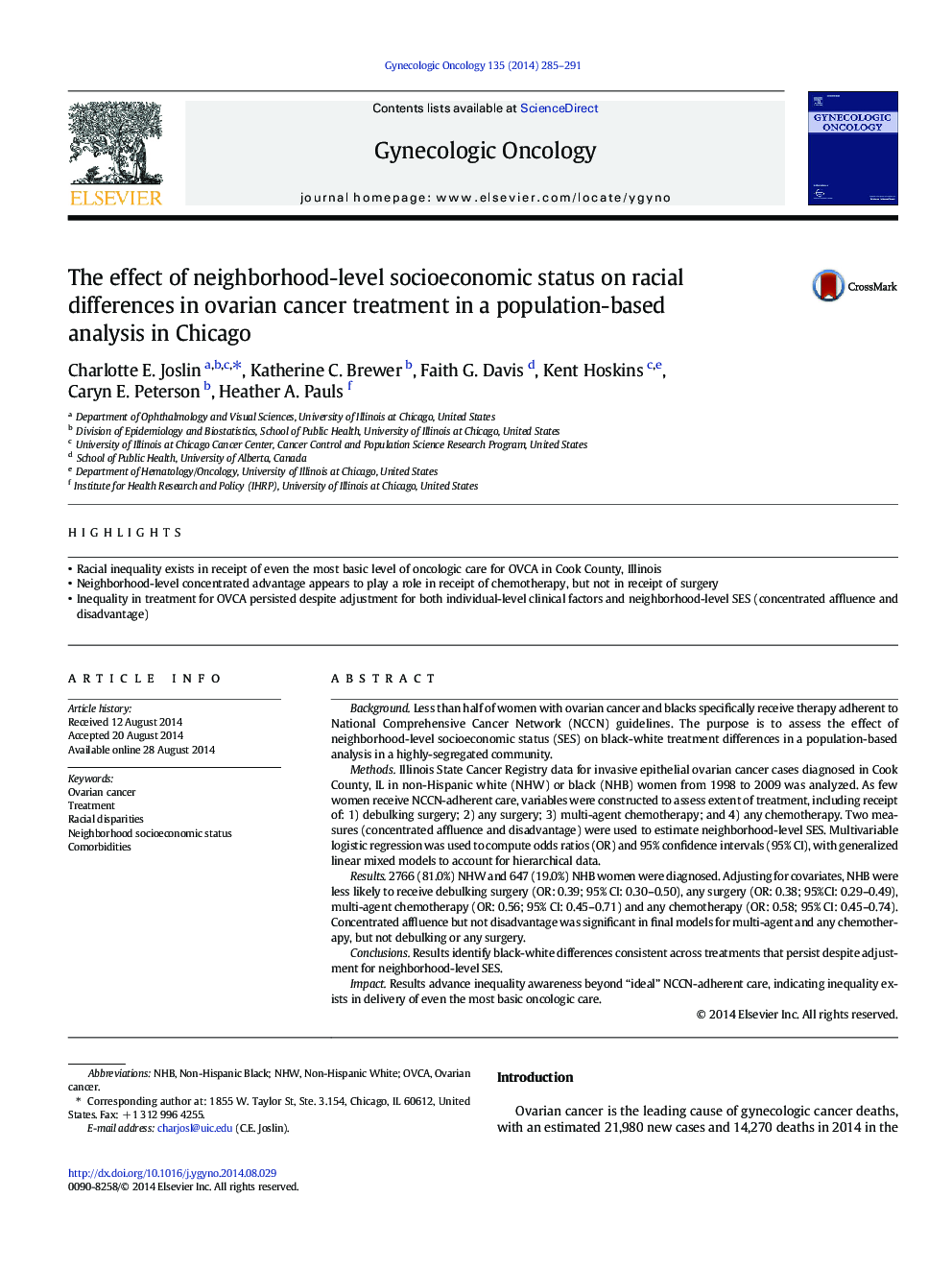| کد مقاله | کد نشریه | سال انتشار | مقاله انگلیسی | نسخه تمام متن |
|---|---|---|---|---|
| 6183299 | 1254101 | 2014 | 7 صفحه PDF | دانلود رایگان |
- Racial inequality exists in receipt of even the most basic level of oncologic care for OVCA in Cook County, Illinois
- Neighborhood-level concentrated advantage appears to play a role in receipt of chemotherapy, but not in receipt of surgery
- Inequality in treatment for OVCA persisted despite adjustment for both individual-level clinical factors and neighborhood-level SES (concentrated affluence and disadvantage)
BackgroundLess than half of women with ovarian cancer and blacks specifically receive therapy adherent to National Comprehensive Cancer Network (NCCN) guidelines. The purpose is to assess the effect of neighborhood-level socioeconomic status (SES) on black-white treatment differences in a population-based analysis in a highly-segregated community.MethodsIllinois State Cancer Registry data for invasive epithelial ovarian cancer cases diagnosed in Cook County, IL in non-Hispanic white (NHW) or black (NHB) women from 1998 to 2009 was analyzed. As few women receive NCCN-adherent care, variables were constructed to assess extent of treatment, including receipt of: 1) debulking surgery; 2) any surgery; 3) multi-agent chemotherapy; and 4) any chemotherapy. Two measures (concentrated affluence and disadvantage) were used to estimate neighborhood-level SES. Multivariable logistic regression was used to compute odds ratios (OR) and 95% confidence intervals (95% CI), with generalized linear mixed models to account for hierarchical data.Results2766 (81.0%) NHW and 647 (19.0%) NHB women were diagnosed. Adjusting for covariates, NHB were less likely to receive debulking surgery (OR: 0.39; 95% CI: 0.30-0.50), any surgery (OR: 0.38; 95%CI: 0.29-0.49), multi-agent chemotherapy (OR: 0.56; 95% CI: 0.45-0.71) and any chemotherapy (OR: 0.58; 95% CI: 0.45-0.74). Concentrated affluence but not disadvantage was significant in final models for multi-agent and any chemotherapy, but not debulking or any surgery.ConclusionsResults identify black-white differences consistent across treatments that persist despite adjustment for neighborhood-level SES.ImpactResults advance inequality awareness beyond “ideal” NCCN-adherent care, indicating inequality exists in delivery of even the most basic oncologic care.
Journal: Gynecologic Oncology - Volume 135, Issue 2, November 2014, Pages 285-291
